Digital and Analog Systems
Analog Signal
Analog signals are time-varying and usually bound to a range (such as +12V to -12V), but have an infinite number of values within that continuous range. Analog signals use the specific properties of the medium to convey signal information. B. Current flowing through the wire. Electrical signals allow you to represent information by varying the voltage, current, or frequency of the signal. Analog signals are often computed as responses to changes in light, sound, temperature, position, pressure, or other physical phenomena. A sequence of discrete values. A digital signal can have only one value from a finite set of possible values at any given time.
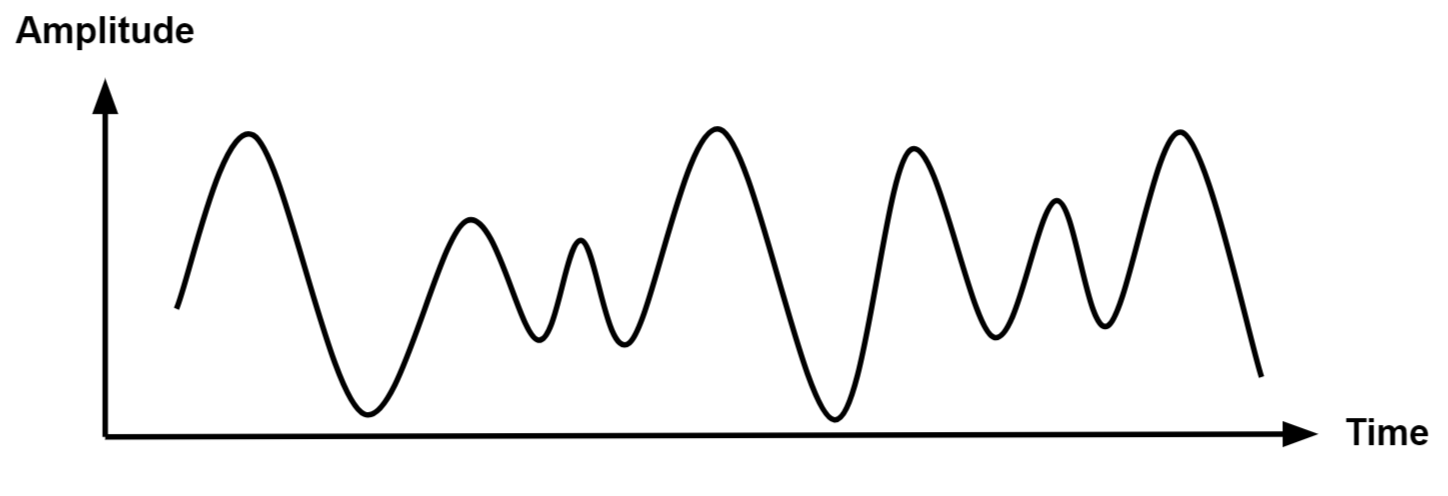
Analog Signal
Digital Signal
Variable current or voltage
Phase or polarization of electromagnetic fields
Sound pressure
Magnetization of magnetic storage media
Digital signals are used throughout digital. Electronic equipment, including computer equipment and data transmission equipment. Expressed as a voltage versus time diagram, a digital signal can represent one of two values, typically ranging from 0V to VCC (usually 1.8V, 3.3V, or 5V). All electronic components (resistors, capacitors, inductors, diodes, transistors, op amps) are analog components in nature. A circuit made up of a combination of these components is an analog circuit.)
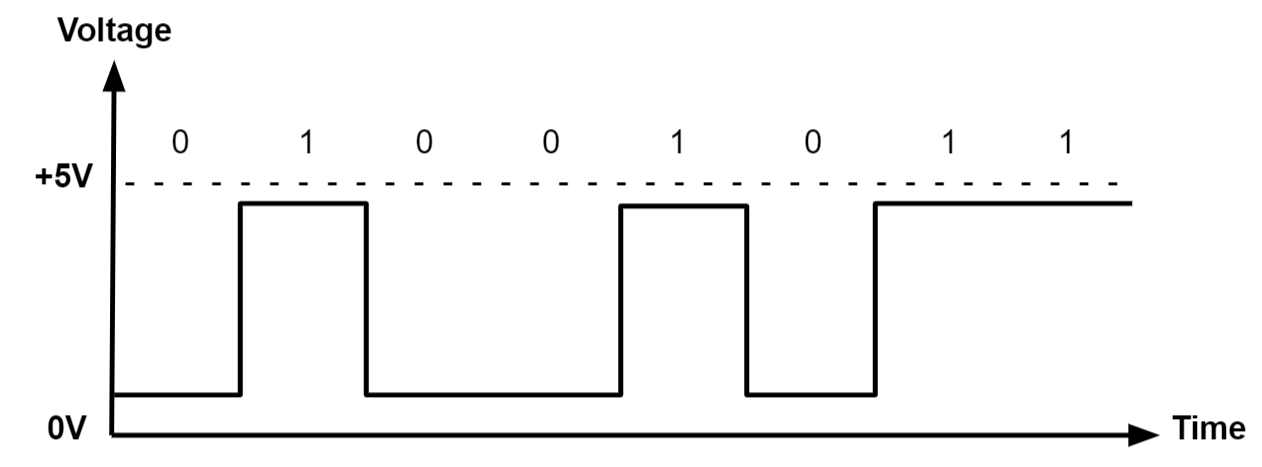
B. Two resistors forming a voltage divider. Analog circuits are generally more difficult to design than digital circuits that perform the same task. It would take a designer who is familiar with analog circuits to design an analog radio receiver, or an analog battery charger, since digital components have been adopted to simplify those designs
Analog circuits are generally susceptible to noise, and "noise" is small unwanted voltage fluctuations. Small changes in the voltage levels of analog signals can cause significant errors during processing. Analog signals are commonly used in communication systems that use continuous signals to transmit voice, data, images, signals, or video information. There are two basic types of analog transmission, both based on how the data is adapted to combine with the input and carrier signals. Two techniques are amplitude modulation and frequency modulation. Amplitude modulation (AM) adjusts the amplitude of the carrier signal. Frequency modulation (FM) adjusts the frequency of a carrier signal. Analog transmission can be achieved in many ways.
over twisted pair or coaxial cable
over fiber optic cable
over radio
over water These signals are precisely captured and processed in electronics. MPS manufactures a variety of analog ICs and components, including the MP2322, a low IQ synchronous buck converter in a tiny 1.5mm x 2mm QFN package.
Digital Electronics
Digital circuits implement components such as logic gates and more complex digital ICs. Such an IC is represented by a rectangle with pins extending from it.
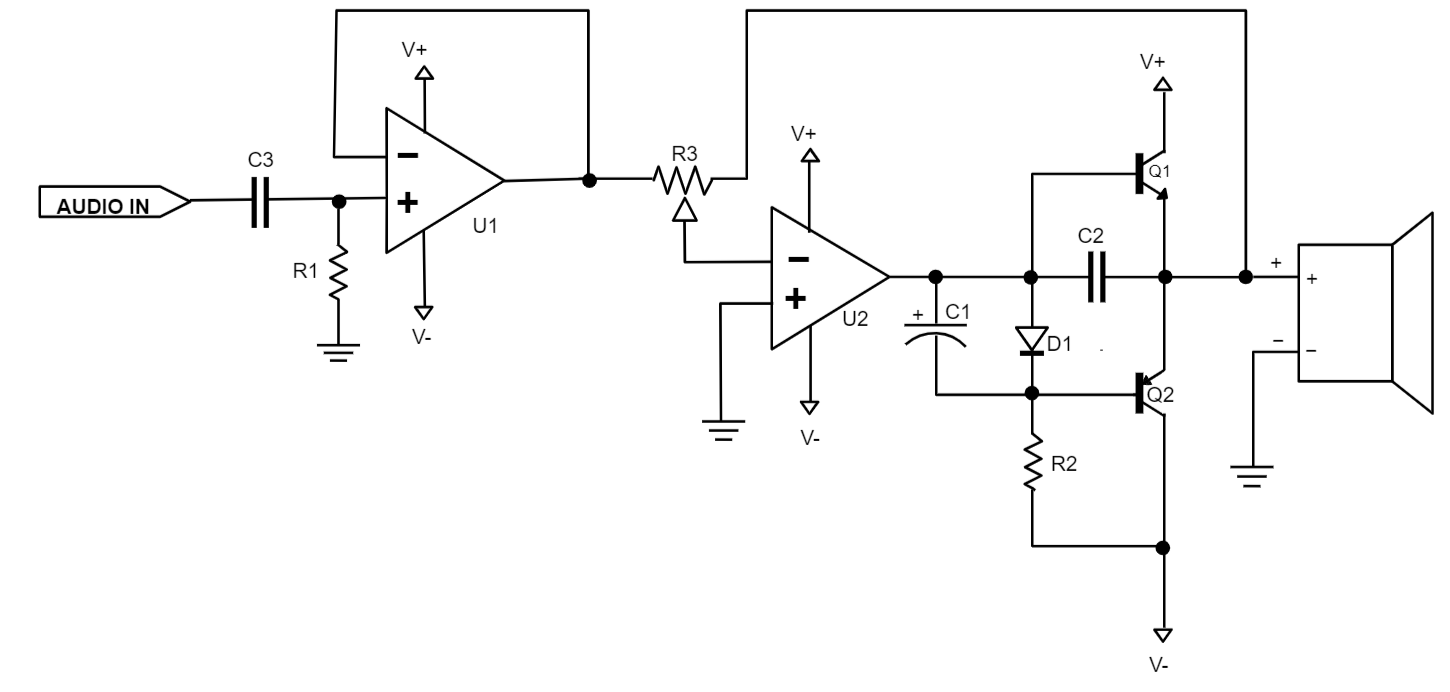
Analog Circuit
Analog circuits can be complex designs with multiple components, or they can be simple, such as two resistors that form a voltage divider. In general, analog circuits are more difficult to design than digital circuits that accomplish the same task. It would take a designer who is familiar with analog circuits to design an analog radio receiver, or an analog battery charger, since digital components have been adopted to simplify those designs.
Analog circuits are usually more susceptible to noise, with “noise” being any small, undesired variations in voltage. Small changes in the voltage level of an analog signal can produce significant errors when being processed.
Analog signals are commonly used in communication systems that convey voice, data, image, signal, or video information using a continuous signal. There are two basic kinds of analog transmission, which are both based on how they adapt data to combine an input signal with a carrier signal. The two techniques are amplitude modulation and frequency modulation. Amplitude modulation (AM) adjusts the amplitude of the carrier signal. Frequency modulation (FM) adjusts the frequency of the carrier signal. Analog transmission may be achieved via many methods:
- Through a twisted pair or coaxial cable
- Through an optical fiber cable
- Through radio
- Through water
Much like the human body uses eyes and ears to capture sensory information, analog circuits use these methodologies to interface with the real world, and to accurately capture and process these signals in electronics.
MPS makes a variety of analog ICs and components, such as the MP2322, a low IQ synchronous step-down converter in a tiny 1.5mmx2mm QFN package
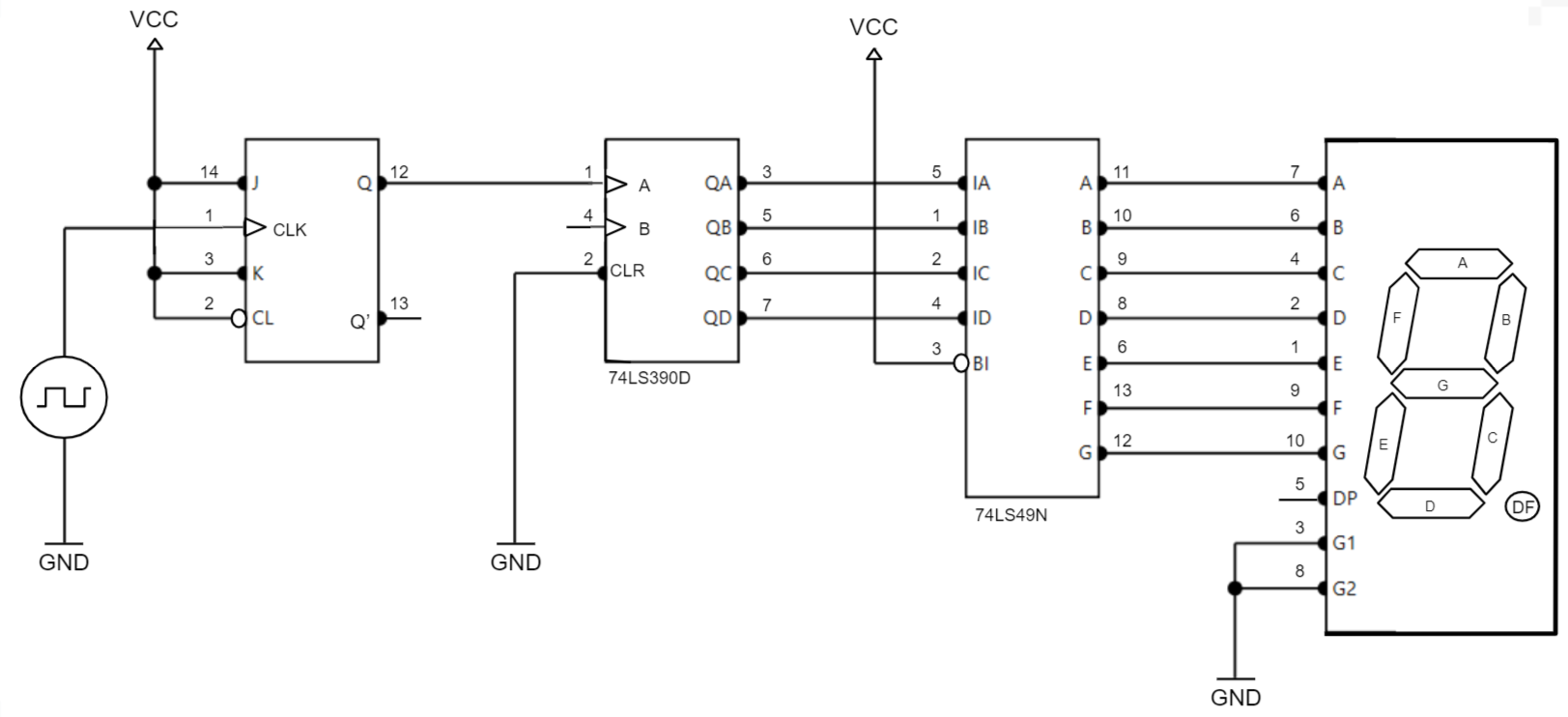
Digital Circuit
Digital circuits usually use a binary scheme. Data values are represented by only two states (0 and 1), but larger values can be represented by groups of binary bits. For example, in a 1-bit system, 0 represents data value 0 and 1 represents data value 1. However, in a 2-bit system, 00 represents 0, 01 represents 1, and 01 represents 1. 10 represents 2 and 11 represents 3.
On a 16-bit system, the largest number that can be represented is 216, or 65,536. These bit groups can be captured as a sequence of consecutive bits or as a parallel bus. This means that large data streams can be handled without problems. Unlike analog circuits, the most useful digital circuits are synchronous. In other words, there is a reference clock that regulates the behavior of the blocks of the circuit to make them behave in a predictable way. Analog electronics work asynchronously. H. Process the signal arriving at the input. Most digital circuits use digital processors to manipulate data. This can take the form of a simple microcontroller (MCU) or a more complex digital signal processor (DSP) capable of filtering and manipulating large data streams such as video. Digital signals are commonly used in communication systems where digital transmission can carry data over point-to-point or point-to-multipoint transmission channels, such as copper wires, fiber optics, wireless communication media, storage media, and computer buses. The data that can be transmitted is represented as electromagnetic signals such as microwaves, radio waves, voltages, and infrared signals. Digital circuits are generally easier to design, but are often more costly than analog circuits intended for the same task. MPS' catalog of digital components includes the MP2886A, a digital multi-phase PWM controller with a PWM VID interface compliant with NVIDIA's Open VReg specification.
Analog-to-Digital (ADC) and Digital-to-Analog (DAC) Signal Conversion
shows a general architecture in which an analog RF front end (AFE) consists of all analog blocks to amplify, filter and recover analog signals. Digital signal processors (DSPs), on the other hand, filter and process information.
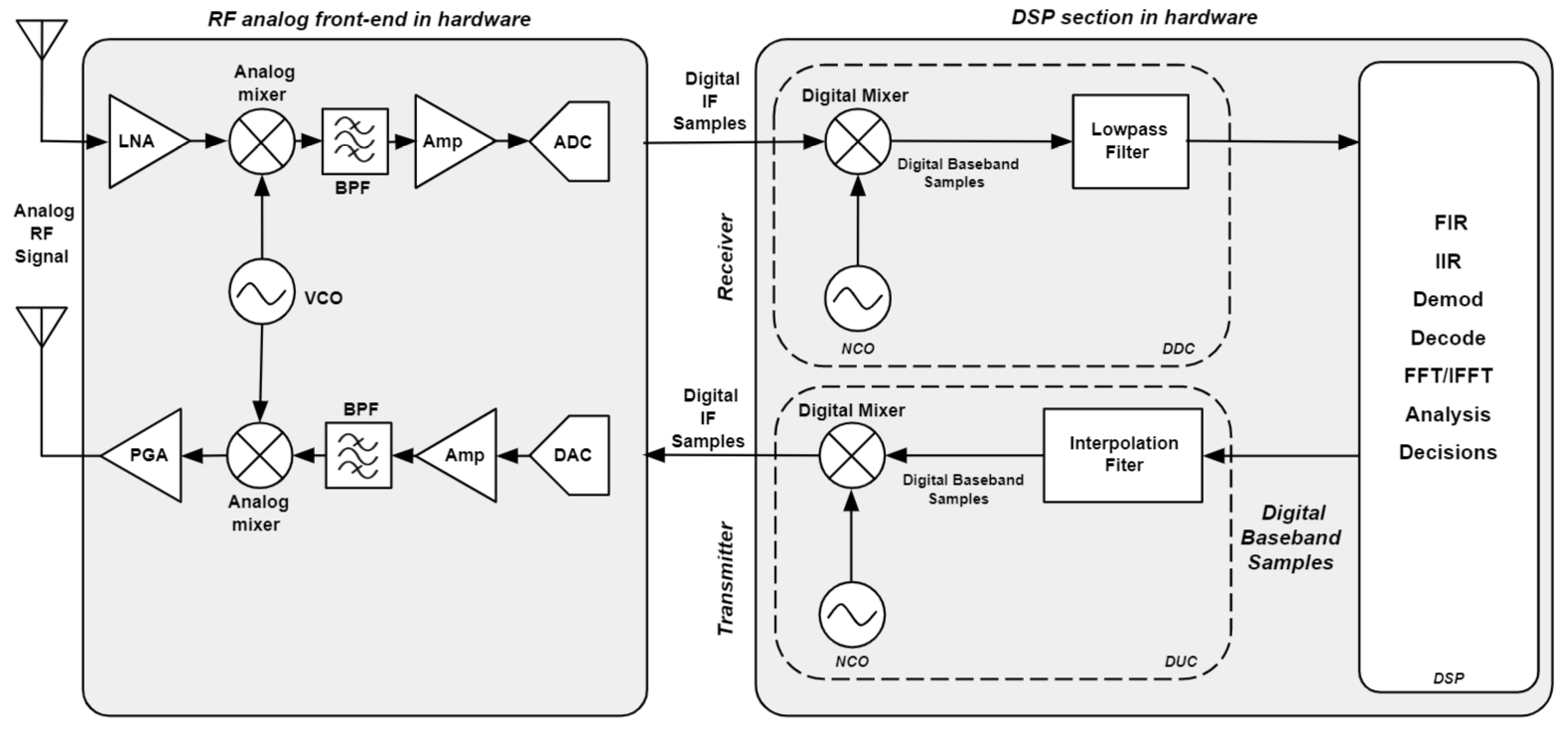 Communication System with Analog and Digital Subsystems
Communication System with Analog and Digital Subsystems
 Communication System with Analog and Digital Subsystems
Communication System with Analog and Digital SubsystemsADC Operation
ADC in action shows the ADC in action. The input is an analog signal that is processed through a sample-and-hold (S/H) circuit to produce an approximate digital representation of the signal. Amplitudes are no longer infinite values, they are "quantized" into discrete values according to the resolution of the ADC. A high-resolution ADC has a finer step size and more accurately represents the analog input signal.The final stage of the ADC encodes the digitized
signal into a binary bit stream that represents the amplitude of the
analog signal.Digital output can now be processed in the digital
domain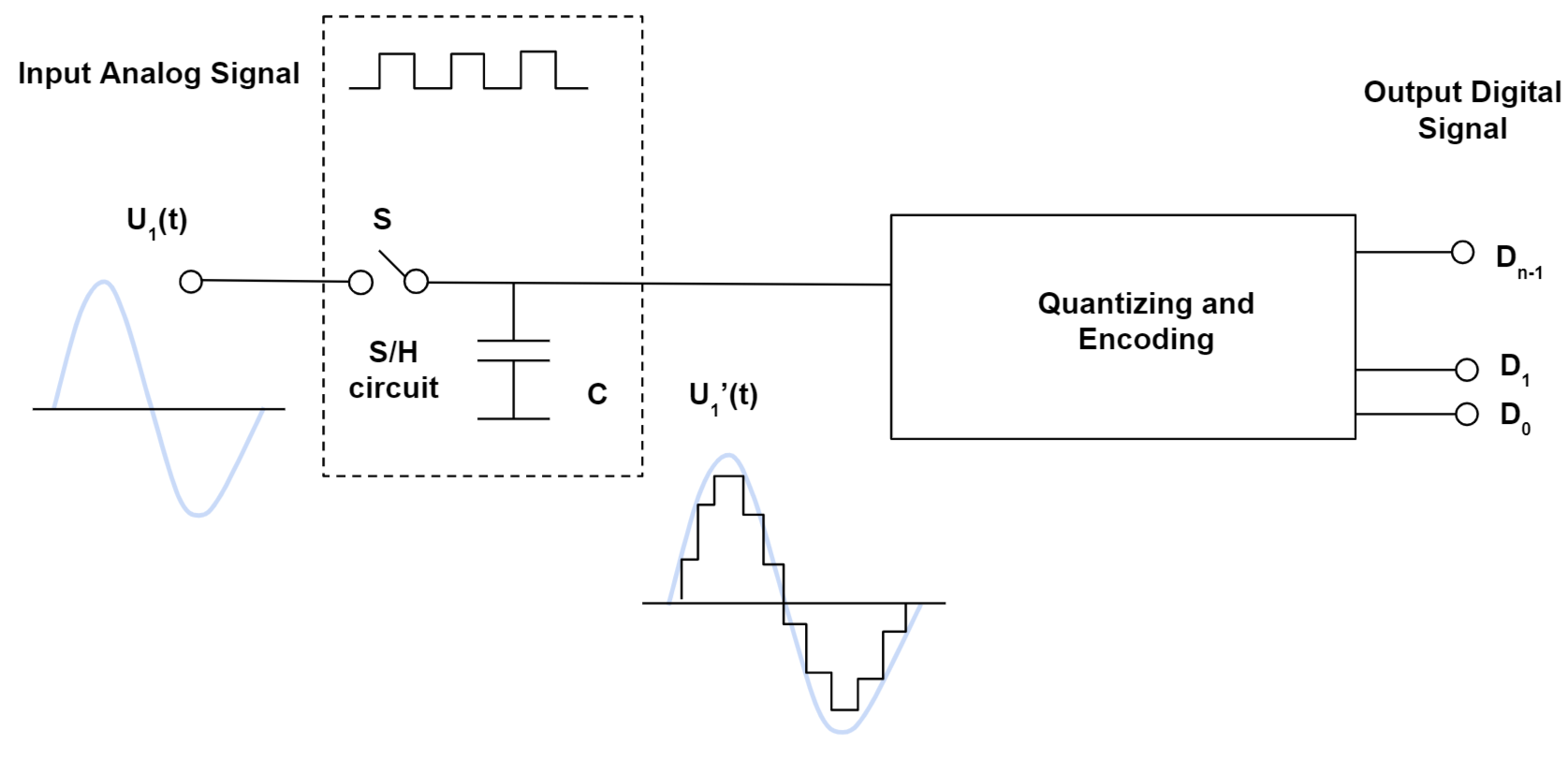
Typical ADC Architecture for Analog to Digital Signal Conversion
DAC Operation
The DAC offers the opposite operation. A DAC input is a binary data stream from a digital subsystem that outputs discrete values approximated as an analog signal.
As the resolution of the DAC improves, the output signal gets closer and closer to a truly smooth, continuous analog signal . Analog signal chains usually have a post filter to further smooth out the
waveform.
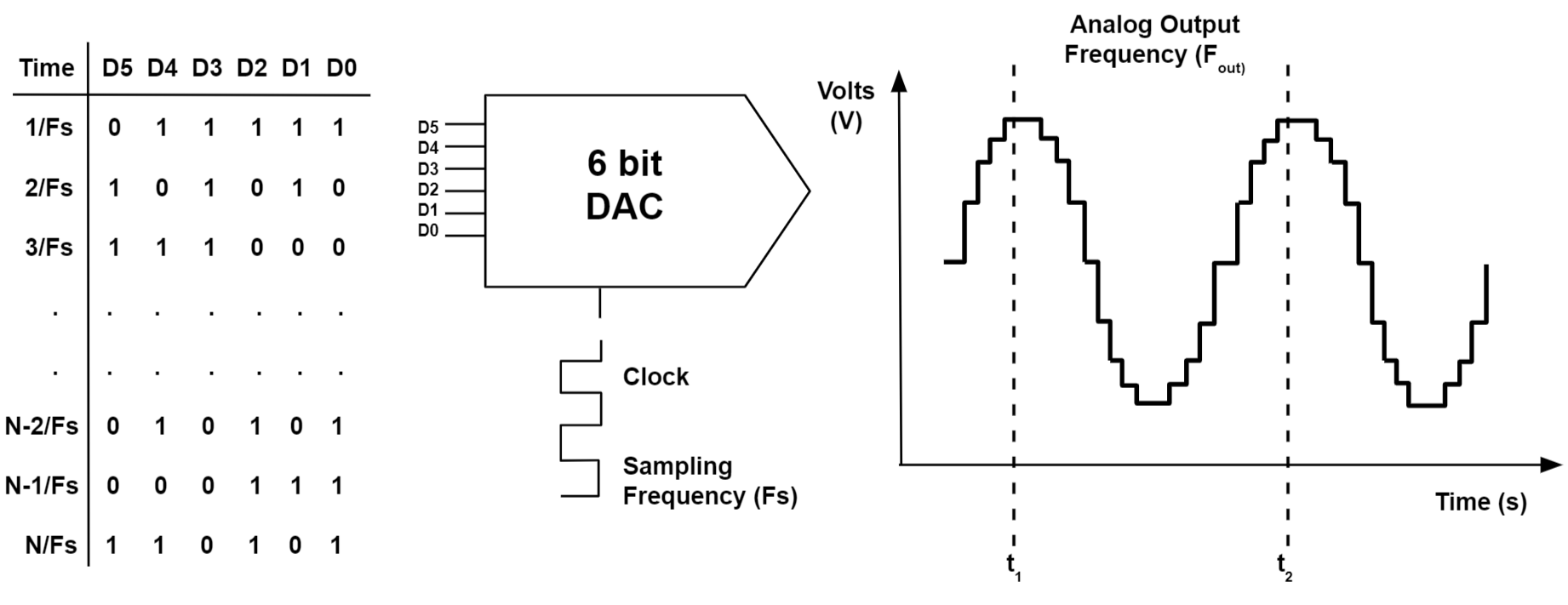
6-Bit DAC for Digital-to-Analog Signal Conversion
As mentioned before, many systems used today are “mixed signal,” meaning they rely on both analog and digital subsystems. These solutions require ADCs and DACs to convert information between the two domains.
Digital Signals vs. Analog Signals: Advantages and Disadvantages
Advantages and Disadvantages As with most technical challenges, both analog and digital signals have advantages and disadvantages. The specific application, performance requirements, transmission medium, and operating environment determine whether analog or digital signals (or a combination thereof) should be used
Digital Signals: Advantages and Disadvantages
Here are some advantages of using digital signals, such as digital signal processing (DSP) and
communication systems.-
digital circuits are relatively inexpensive and easy to mass produce. The
- Digital Signal Processing is more flexible as it allows for altering DSP operations in a digitally programmable system.
- Digital signal processing is more secure because
digital information can be easily encrypted and compressed. The
- digital system is more accurate and error detection and correction codes are used to reduce the possibility of errors.
- Digital signals can be easily stored on magnetic
or optical media using semiconductor chips.
- Can transmit digital signals over long distances.
Disadvantages to using digital signals, including digital signal processing (DSP) and communication systems, include the following:
DSPS process signals faster and contain more internal top hardware resources. This results in higher power consumption compared to analog signal processing with passive components that consume less power.
Disadvantages to using digital signals, including digital signal processing (DSP) and communication systems, include the following:
DSPS process signals faster and contain more internal top hardware resources. This results in higher power consumption compared to analog signal processing with passive components that consume less power.
Digital systems and processing tend to be more complex.
Analog Signals: Advantages and Disadvantages
Advantages to using analog signals, including analog signal processing (ASP) and communication systems, include the following:
- analog signal is easy to process.
- analog signal ideal for audio and video transmission. The
- analog signal is much denser and can represent more sophisticated information.
- Analog signals use less bandwidth than digital signals.
- analog signals more accurately represent changes in physical phenomena such as sound, light, temperature, position and pressure. The
analog communication system is less susceptible to electrical tolerances.
Disadvantages to using analog signals, including analog signal processing (ASP) and communication systems, include the following:
- Data transmission at long distances may result in undesirable signal disturbances.
- Analog signals are prone to generation loss.
- Analog signals are subject to noise and distortion, as opposed to digital signals which have much higher immunity.
- Analog signals are generally lower quality signals than digital signals.
- Analog signals are easier to process.
- Analog signals best suited for audio and video transmission.
- Analog signals are much higher density, and can present more refined information.
- Analog signals use less bandwidth than digital signals.
- Analog signals provide a more accurate representation of changes in physical phenomena, such as sound, light, temperature, position, or pressure.
- Analog communication systems are less sensitive in terms of electrical tolerance.
Disadvantages to using analog signals, including analog signal processing (ASP) and communication systems, include the following:
- Data transmission at long distances may result in undesirable signal disturbances.
- Analog signals are prone to generation loss.
- Analog signals are subject to noise and distortion, as opposed to digital signals which have much higher immunity.
- Analog signals are generally lower quality signals than digital signals.
Analog and Digital Signals: Systems and Applications
Traditional audio and communication systems used analog signals. However, with advances in silicon process technologies, digital signal processing capabilities, encoding algorithms, and encryption requirements — in addition to increases in bandwidth efficiencies — many of these systems have become digital. They are still some applications where analog signals have legacy use or benefits. Most systems that interface to real-world signals (such as sound, light, temperature, and pressure) use an analog interface to capture or transmit the information. A few analog signal applications are listed below:
- Audio recording and reproduction
- Temperature sensors
- Image sensors
- Radio signals
- Telephones
- Control systems
MPS has a broad portfolio of analog parts, including the,MP2322,MP8714,MP2145, and MP8712
Although many original communication systems used analog signaling (telephones), recent technologies use digital signals because of their advantages with noise immunity, encryption, bandwidth efficiency, and the ability to use repeaters for long-distance transmission. A few digital signal applications are listed below:
- Communication systems (broadband, cellular)
- Networking and data communications
- Digital interfaces for programmability
Visit our website to learn more about MPS’s digital parts, such as the MP2886A, MP8847,MP8868 , MP8869S, and MP5416.
Conclusion
This article introduces some of the basic concepts of analog and digital signals, and their uses in electronics. There are clear advantages and disadvantages with each technology, and knowing your application’s needs and performance requirements will help you determine which signal(s) to choose.
Roll no 32: Abhijeet Padwal
Roll no 35: Yogesh Pande
Roll no 36: Abhay Pandhare
Guided by : Prof .Dr.Vijay Mahadeo Mane


Comments
Post a Comment